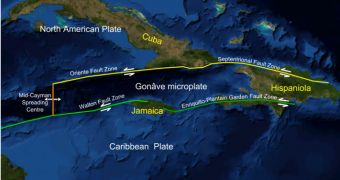Experts say in a new scientific study that the January earthquake which struck the impoverished nation of Haiti did not release all of the tension accumulated in the tectonic plates surrounding the area.
The main implication for this is that future quakes are still possible in the region. They could be of varied magnitudes, and some could even reach or surpass the magnitude-7.0 tremor that struck Haiti.
One of the main reasons why the risk remains is that the January devastation caused a large amount of ground uplift in the coastal regions of the country.
This in turn triggered slips in multiple fault lines. After the earthquake struck, geologists discovered new lines running offshore, and including them in tectonic model completely changed the dynamics of the area.
The new investigation, which appears online in the latest issue of the esteemed scientific journal Nature Geoscience, reveals that tension has been gathering in the faults around Haiti for at least 200 years.
The paper was published in a special issue that the journal edited, which is dedicated entirely to presenting conclusions of studies that analyzed the situation caused by the Haiti quake.
For the purpose of the new study, investigators used a variety of scientific tools, including seismological observations, geologic field data and satellite geodetic measurements.
Results were then combined to analyze the earthquake source. The study was carried out by a consortium of American universities and federal agencies.
The US Geological Survey (USGS), the California Institute of Technology (Caltech), the NASA Jet Propulsion Laboratory (JPL), and the University of Texas were all involved in the research.
USGS geophysicist Gavin Hayes was the leader of the new investigation. He suggests that past events such as the January quake may have slipped under the radar.
He adds that the same could hold true for tectonic fault line systems such as the one around the San Andreas fault, on the western coast of the United States.
A large-scale effort is currently underway at the location in order to determine the structure of the system both on land and offshore.
When the Haiti tremor first struck, experts thought that it had been triggered by a fault line between the Caribbean and North American plates.
But the new study reveals that no single fault was responsible for this. Rather, the quake originated in a complex series of interactions between several faults.

 14 DAY TRIAL //
14 DAY TRIAL //